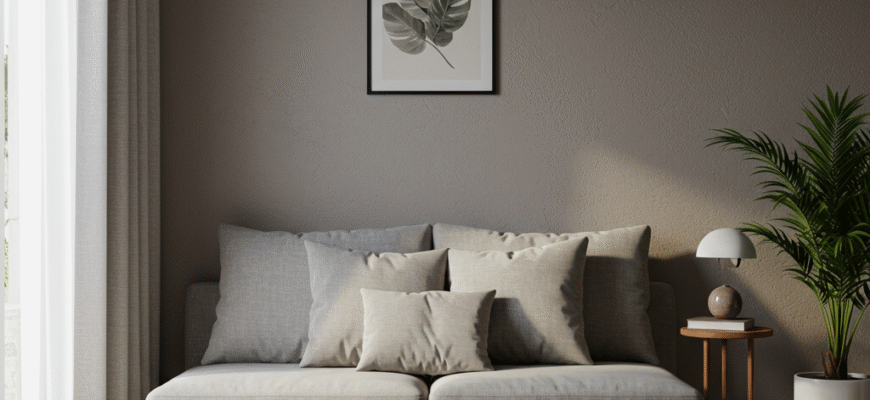Content
What Does ‘Sanctuary’ Mean to You?
Before you start rearranging furniture, take a moment to reflect. What does a sanctuary feel like to you? What activities bring you peace? Your sanctuary should reflect your unique needs and personality. For some, it might be a cozy reading nook bathed in soft light. For others, it could be a minimalist space for meditation or yoga. Maybe it’s a vibrant corner dedicated to a creative hobby like painting, knitting, or journaling. Consider these questions:- What activities help you relax and de-stress most effectively? (Reading, listening to music, meditating, crafting, simply sitting quietly?)
- What kind of atmosphere feels calming to you? (Minimalist, cozy, nature-inspired, vibrant?)
- When will you most likely use this space? (Morning reflection, midday break, evening wind-down?)
Finding Your Spot: Big or Small, It All Works
Now, let’s talk location. You don’t need a dedicated room (though if you have one, fantastic!). Look around your home with fresh eyes. Potential sanctuaries can be found in unexpected places:- A quiet corner: Even a small corner in a living room, bedroom, or even a wide hallway can be transformed. Use a room divider, a tall plant, or a bookshelf to create a sense of separation.
- Underutilized spaces: Is there a guest room that rarely sees guests? A walk-in closet with more space than clothes? An alcove under the stairs? These can often be repurposed.
- Outdoor areas: A small balcony, patio, or even a secluded spot in the garden can become a wonderful sanctuary, especially if you love nature.
- Rethink existing rooms: Can you designate a specific chair and side table in your bedroom as your ‘no-distractions’ zone?
Remember that creating a personal space within a shared home requires communication. Discuss your intention with family members or roommates to ensure everyone understands and respects the purpose of the area. Setting clear boundaries about when the space is ‘off-limits’ can prevent misunderstandings. Compromise might be necessary, especially in smaller living situations.
Clear the Clutter, Clear Your Mind
Once you’ve identified your spot, the single most crucial step is decluttering. A sanctuary cannot function effectively if it’s filled with visual noise and reminders of chores or stress. Remove anything that doesn’t serve the purpose of relaxation or rejuvenation. This means:- Clearing away piles of paper, work items, or general household clutter.
- Removing distracting electronics unless they are specifically part of your relaxation (like a music player).
- Ensuring the area is clean and tidy. Dust bunnies are not conducive to inner peace!
Engage Your Senses for Deep Relaxation
A truly effective sanctuary appeals to more than just the eyes. Consider how you can engage all your senses to create a deeply calming atmosphere.Sight: Setting the Visual Tone
Color Palette: Choose colors known for their calming properties. Soft blues, gentle greens, warm neutrals, or muted earthy tones often work well. However, if a splash of cheerful yellow brings you joy, incorporate it! The ‘rules’ are secondary to what makes *you* feel good. Lighting: Soft, ambient lighting is key. Avoid harsh overhead lights. Opt for lamps with warm-toned bulbs, dimmers, string lights, or even candles (used safely, of course). Maximize natural light if possible, perhaps positioning your space near a window, but consider sheer curtains to diffuse harsh sunlight. Decor: Keep it simple and meaningful. Add elements that evoke peace for you – perhaps artwork depicting nature, plants (which also purify the air), or objects collected from travels. Avoid overcrowding the space; less is often more.Sound: Crafting Your Auditory Landscape
What sounds relax you? For some, it’s absolute quiet. For others, it’s the gentle trickle of a small tabletop fountain, calming instrumental music, nature sounds (like rain or birdsong), or guided meditations. Consider noise-canceling headphones if external noise is unavoidable. If you’re using music or soundscapes, ensure the player is simple to operate and doesn’t become another source of digital distraction.Smell: The Power of Aroma
Scent has a powerful connection to memory and emotion. Introduce calming fragrances through essential oil diffusers (lavender, chamomile, sandalwood, and bergamot are popular choices), scented candles (choose natural waxes like soy or beeswax), incense, or simply fresh flowers or herbs like mint or rosemary. Ensure good ventilation, especially if using stronger scents.Touch: Texture and Comfort
Comfort is paramount. Include elements with pleasing textures. Think soft blankets, plush cushions, a comfortable rug underfoot, or a smoothly worn wooden stool. The tactile experience contributes significantly to the feeling of being enveloped in comfort. Ensure your seating is genuinely comfortable for the length of time you plan to spend there.Taste: A Simple Pleasure (Optional)
While not essential for everyone, incorporating taste can enhance the ritual. Consider a small side table for a cup of herbal tea, a glass of water with lemon, or whatever simple beverage feels comforting and refreshing to you. Keep it simple to avoid turning your sanctuary into a snack bar.Make It Uniquely Yours
This space is a reflection of you and your need for peace. Don’t hesitate to personalize it with items that hold special meaning. This could be:- Photographs of loved ones or cherished memories (choose ones that evoke calm, not stress).
- Meaningful quotes or affirmations.
- Souvenirs from peaceful vacations.
- Your favourite books or journals.
- Comfortable clothing items designated just for this space, like a soft robe or cozy socks.









